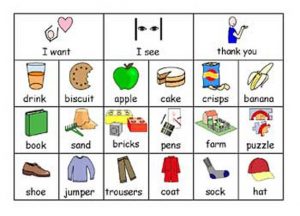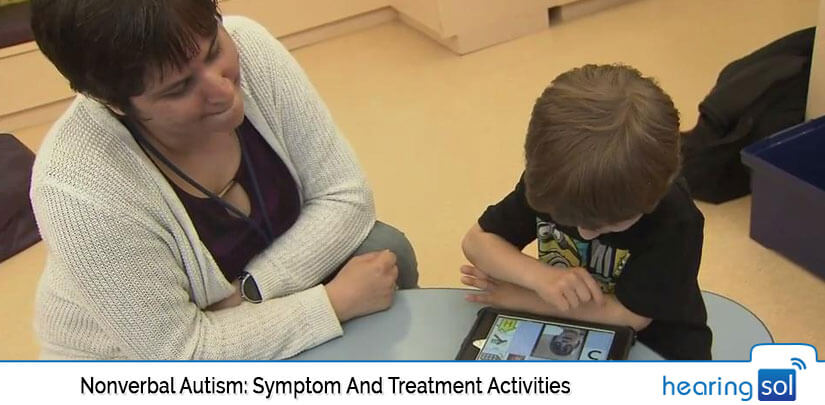
When a person with autism spectrum uses no spoken language or uses just a few words, this type of person might be having Nonverbal autism. Let’s discuss all the related aspects of non-verbal autism.
If you need any assistance or have a question about Nonverbal Autism, you can consult our HearingSol experts with your problem, feel free to call us on +91-9327901950. We are always here to help you.
What Is Nonverbal Autism?
Nonverbal autism is a part of autism. People who have nonverbal autism speak few or no words. Approx one-third of people who have autism spectrum disorder can’t speak or communicate with anyone.
While most of the autistic children try to speak with the help of therapist and researchers, there are only a few children who never speak.
Children have nonverbal autism do not show much brain activity which links objects to their name. Their brain shows only a little bit of brain activity.
Most of the children can sense the net of electrodes which record brain activity. It’s very challenging for them to wear these electrodes.
Researchers approach them at their home and school to make a close relationship with them to take the test. Researchers convince children with autism to put the net on their heads and follow the procedure of the test.
As per estimation, it is identified that 25% of people who have autism spectrum disorder can’t speak a single word. They can’t communicate with others.
High-Risk High Impact (HRHI) kept three meetings to study the capabilities and needs of individuals with nonverbal autism. Therefore, researchers are researching more to make the quality of life of an individual better.
Nonverbal Autism Communication
Communication and interaction are different things. Communication is when a person says something to another person and interaction happens when another person is responding to that person.
Many people who have nonverbal autism can’t interact with others and most of them develop their speech and social interaction with time.
Non-verbal autistic people may use these ways to communicate.
- Gestures
- Crying
- Put their hand on the object they want
- Keep looking at the object they want
- Reaching
- By using pictures they want to tell you about something
- Challenging Behaviour
- Echolalia
Most of the children with nonverbal autism may develop their speech after age 4. That’s why a family member of the children want to know that how children with autism can communicate or develop their speech.
There are some strategies has been produced to develop the language in nonverbal children. But before using these strategies you have to know that every person autism is unique.
So maybe it happens that these strategies may not work for some people.
Does Non-Verbal Autism Mean Low IQ?
Generally, the person who has an IQ score of 70 or less is considered to be Intellectually disabled (ID). Till now we have assumed that all nonverbal children with autism were intellectually disabled for the simple reason that their IQ scores fell under (often far under) 70.
But in recent years, it has become clear that typical IQ tests are very poor tools for measuring intellectual ability in children with autism—particularly when those children are nonverbal.
These tests are not fair due to following reasons-
- For most of the parts, IQ tests depend upon the child’s ability to understand and respond to verbal information or message. But nonverbal children are weak in those areas. This may or may not have any connection to basic intelligence.
- Most of the IQ test requires an ability to understand and respond to social norms and that too within a specific period of time. These norms are very challenging for kids with autism, whether verbal or not.
- Sensory issues can distract autistic children. Non-verbal children with autism don’t have the ability to let the testers know about these sensory issues.
Nonverbal Autism Symptoms
Signs and symptoms of autism in toddlers:
Signs and symptoms which can be observed in nonverbal autistic children are given below-
- When your baby or toddler makes eye contact with you.
- Don’t respond to his or her name.
- They follow an object when you point out to that object.
- Use gestures to talk.
- It creates noise to get your attention.
- Copy your gestures or facial expressions.
Signs and symptoms of autism in adults:
- Do not make eye contact
- Use different facial expression which does not match what they are saying.
- Do not match other people’s tone of voice and gestures.
- Mostly use gestures to talk.
- Behave weird to loud sounds, smells, and textures.
- The different way of moving and walking.
- Never share their favorite things or interests.
NonVerbal Autism Causes
Causes of nonverbal autism are unknown. No one has found the causes of nonverbal autistic behavior. Generally, this happens because of the lack of communication and interaction in childhood.
Children who have autism may develop their language and speech at the age of 4 but because of lack of interaction sometimes they don’t develop their speech and language.
Strategies For Developing Language In Nonverbal Autistic Children
You can support your child to develop speech at home.
- Encourage play and social interaction. Every child loves to play games. Try different word games to develop their communication. And also you can try singing activities to make them social.
- Imitate your child. To encourage your child for speech development just copy their words and their gestures.
- Focus on nonverbal communication. Use body gestures to encourage your child and make also eye contact with them to build communication.
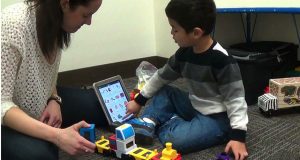
- Leave “space” for your child to talk. Give your child some time to respond while you asking something or talking with them.
- Simplify your language. Use simple language or try to use a single word with your nonverbal child. It helps to follow you by your child.
- Follow your child’s interests. Follow your child’s activity and narrate every activity in words. It helps to make their speech better or learn better more.
- Consider assistive devices and visual supports. You can use some devices and apps with images that your child can touch to learn in a better way.
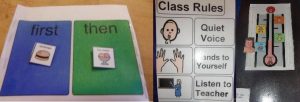
- Be face-to-face. When you talk with your child, just keep in mind you always talk face to face with them. This will help them to improve their language.
- Give feedback. Reward them by applause when they understand, communicate with you or learn some new words and sentences.
- Give a reason to communicate. You can create some situation which will give them a reason to communicate like offer a toy or game that is difficult to operate, give them a ‘high-interest’ object.
- Use mirrors. If your children don’t want to look directly into your eyes you can give them a mirror to make eye contact.
- Do you want X or Y? : You can give some situations of making their decisions over an object.
- Create social stories: You can use some pictures or clip arts to make some encouraging stories.
- Carry a surprise card. Giving them surprise is a great way to develop their language. You can carry a surprising card to give them a surprise.
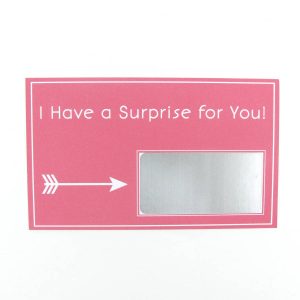
- Instant mobile photos. To communicate with your child use your mobile phone as a picture communication tool.
- Communication books & charts. Use some books with pictures and also charts to develop the speech of your children
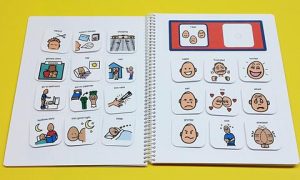
- Communi-bands. You can provide your children with a community band to answer the questions in YES or NO.
Nonverbal Autism Activities
Living or working with a nonverbal child is very challenging. Their parents and teachers had a frustrating experience with what they want and how they are feeling.
It’s very challenging for therapist and researchers also to complete their therapy test with a nonverbal child. Here are some activities for nonverbal autistic children which can be easy to communicate.
For Therapist
- Use Routines Boards that help them in their daily routines activities.
- Use Red Light, Green Light to encourage them to follow the directions.
- You can use Practice Sharing in which a child is busy playing a toy and you take the toy from them.
- Use Daily Journals to know about their interests and favorite things.
- Use some pictures of emotions that take turns modeling.
- Play Hide and Seek with a toy and ask children to locate the toy.
- Use Sensory Bags to develop communication in children.
- Playing House is a great way to learn more words for nonverbal autistic children.
- The Name Game helps children to identify their name with sounds.
- Textures and Feelings is a great way to develop the speech.
- Use Experience Books to help them to learn more about morals.
For Parents
- Create Visual Labels for Basic Feelings
- Assume the Child Understands What You’re Saying
- Add Visuals to Aid Communication
- Teach Facial Expressions and Gestures
- Encourage Communication with Motivation
How parents can spot the warning signs?
To know the nonverbal autism in your children you can observe your child behavior and activities. If you see any unusual behavior in your child, visit the pediatrician.
The pediatrician will take 15 minutes to check that your child has autism or not. Follow the steps to monitor the warning signs of nonverbal autism.
- Observe your child’s development.
- Take action if you observe anything unusual.
- Don’t wait to see for a long time
- Go to the nearest Pediatrician.
Treatment Trials For Non-verbal Autism
Many trials for the treatment of nonverbal autism has been going on. These activities can help a nonverbal child to recover. Some of these trials are-
1. Picture Exchange Communication System
This system helps people with little or no communication abilities to communicate using pictures. People who are using PECS are taught to approach another person and give them a picture of the desired item in exchange for that item.
As a result, a person will be able to initiate communication. PECS can be used to communicate a thought, a request or anything that can plausibly be displayed or symbolized on a picture card.
2. Speech-generating device
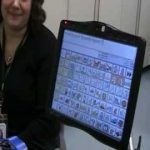
Speech-generating devices can be programmed to say words aloud for the child. It has been studied that nonverbal children who use a speech-generating device early in speech therapy have more socially communicative responses, as a result, after six months than those who get the device later.
3. Auditory-motor mapping training
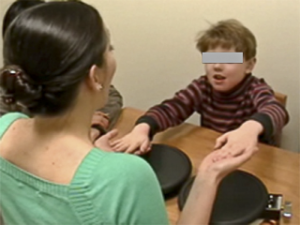
It is a therapy that combines rhythmic hand movements with a sing-song intonation. This therapy has been proved successful in treating people who have lost the ability to speak after a stroke. A concept study also shows that it can facilitate speech in nonverbal children with autism.
4. JASPER
This training is particularly helpful for nonverbal children and emphasizes joint attention, play skills, and spoken-language development.
Conclusion
Nonverbal autism can be developed at the age of 4 but there are many great tools which can help to improve the speech and communication in children with nonverbal autism.
If you observe any unusual behavior in your child then you must take action against it. Visit your nearest Pediatrician to know about the unusual behavior.
Children may improve their speech and communication with the help of the therapist and researches.
If you need any assistance or have a question about Nonverbal Autism, you can consult our HearingSol experts with your problem, feel free to call us on +91-9327901950. We are always here to help you.

 Reviewed by Mr. Ranjeet Kumar
Sr. Audiologist, Speech Therapist & Cochlear Implant Specialist, BASLP on
Reviewed by Mr. Ranjeet Kumar
Sr. Audiologist, Speech Therapist & Cochlear Implant Specialist, BASLP on
